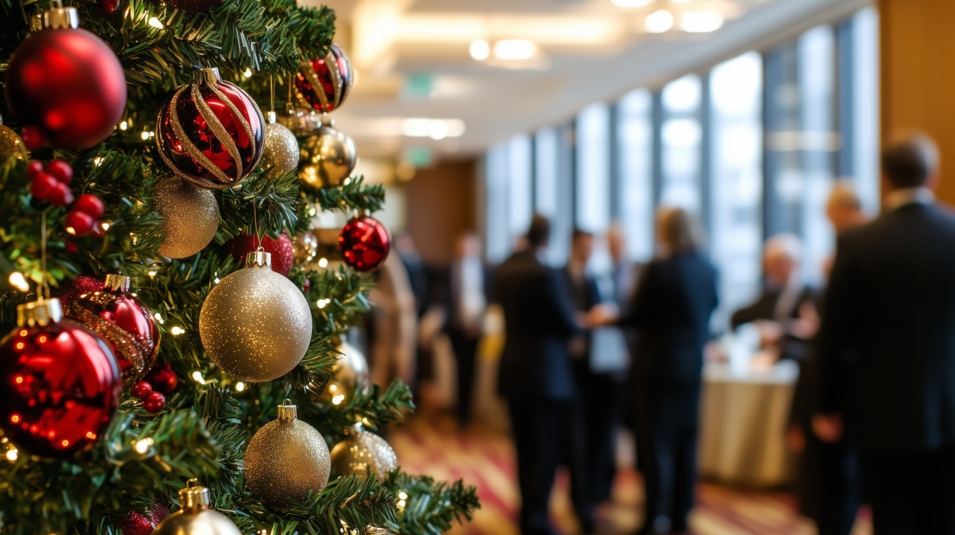Wishes in 2024: an outdated tradition or a strategic lever to exploit?
As the end-of-year holidays approach, a question arises in both the professional and private spheres: should we still wish each other wishes? This ritual, once essential to mark the transition from one year to the next, seems to be losing its relevance in the face of the rise of modern communication tools and a certain fatigue in its practices.

Wishes were long a way to express desires for happiness and success, but as the years go by, the formulations seem less authentic and more standardized. However, has this tradition truly lost all its meaning? What if it became a strategic opportunity to reinvent communication and strengthen connections with one's interlocutors? In this article, we will trace the origins of this established tradition, highlight the general decline of interest recently felt towards this practice, and conclude by linking how to wish wishes effectively and respect one's communication strategy.
Wishes: an ancestral tradition still relevant
The act of formulating wishes dates back to times when natural cycles structured the lives of communities. In Antiquity, people marked the changes of season with ceremonies where they exchanged wishes for prosperity and happiness. These wishes symbolized the hope for a better future and the strengthening of bonds within a society. Over the centuries, this practice has evolved to adapt to cultural and social contexts. The arrival of greeting cards in the 19th century, especially with the first printed creations in England, brought this tradition into the modern era. They allowed for a personalized and impactful message to be conveyed, reflecting an effort to show attention to the other. In business, wishes gradually became a way to show recognition towards employees, thank partners for their trust, or strengthen business relationships. This tradition remains relevant because it addresses fundamental human needs: the need to recognize the path taken and project positive intentions into the future. In the professional world, these gestures, even symbolic, play a role in creating a culture of belonging and in loyalty among stakeholders. In an era where speed and immediacy dominate, taking the time to formulate wishes, with sincerity, can still make a difference today.
Wishes in the digital era: between weariness and trivialization
However, the evolution of communication methods has profoundly changed the way we exchange wishes. While digitization has facilitated exchanges, it has also led to a certain standardization of messages. Wishes sent by email to large lists of contacts, generic posts on social media, or automated SMS have largely replaced handwritten cards or more personalized gestures. This industrialization of wishes often dilutes their impact. Receiving a standardized message creates neither emotion nor engagement, and the multiplication of these messages sometimes leads to fatigue among their recipients. Far from tightening bonds, these impersonal wishes can be seen as a formality or a chore. Additionally, the saturation of messages at the end of the year tends to reduce their effectiveness and eventually annoy recipients. In this context, it is becoming increasingly difficult for businesses to stand out and capture the attention of their audience. Wishes, if not well thought out and adapted, can be perceived as a mere mechanical act, with no real added value. In the professional world, businesses face a dilemma: should they continue to invest time and energy in this practice, which may seem outdated and ineffective, or should they completely rethink how they communicate during this strategic period? The stakes are high, because poor management of wishes can result in a vague message that goes unnoticed or leads to a negative perception of the brand.
How to turn wishes into a strategic and impactful tool?
Rather than abandoning wishes, businesses should view them as a unique opportunity to assert their vision and reinforce their positioning. To do this, it is crucial to rethink wishes not as a formality, but as a strategic statement. The key lies in authenticity and personalization. A sincere message, reflecting the true values of the company, will have a much greater impact than a simple generic text. Social media, for example, offers varied and creative formats that allow wishes to be transformed into an engaging statement: personalized videos, interactive animations, or even employee testimonials, can capture attention and provoke a positive reaction. Furthermore, integrating wishes into a broader communication strategy can increase their relevance. Rather than isolating them, they can be part of a campaign aimed at thanking partners for the successes of the past year, announcing plans for the coming year, or reminding people of the company's commitments. By targeting the right audiences and adapting the right message to each interlocutor, wishes become a powerful communication tool, capable of generating value for all stakeholders. Finally, we must not underestimate the importance of timing. Sending wishes before the saturation of the new year, or pairing them with a symbolic gesture (such as a charitable action or a personalized contest), can significantly enhance their impact. The goal is to show that the company is not merely following a tradition, but is committed to offering a memorable experience to its contacts.
Far from being a relic of the past, end-of-year wishes can still play a key role in modern communication. However, they must evolve to meet contemporary expectations and customs. Understanding their origin and symbolism helps avoid reducing them to a mere formality. Taking this opportunity to strengthen relationships, share a vision, and integrate them into a broader strategy gives new life to this practice. For 2024, businesses have every reason to reinvent their wishes, providing more sincere, more targeted, and more aligned content with their goals. Ultimately, well-thought-out wishes are not just a gesture of politeness: they can become a lever to make a lasting impression and build sustainable relationships.
